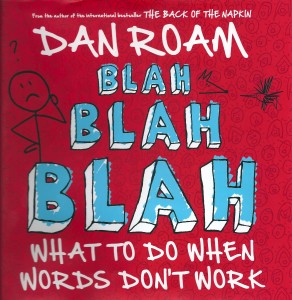The one-sentence summary
Words on their own often fail to communicate sufficiently, so try combining them carefully with visual imagery.
WHAT THE BOOK SAYS 
• We talk so much that we don’t think very well. Words have become our default thinking tool, but they are not enough.
• Vivid thinking is Visual Verbal and InterDependent.
• Our inner fox represents words, analytical and linear approaches, whilst the hummingbird is visual, synthesising and spatial – combining both approaches leads to the best ideas and counteracts waffle.
• The three levels on the Blah-Blahmeter are:
1. Blah: boring message, complicated idea, with intent to illuminate
2. Blah blah: foggy message, idea missing, with intent to obfuscate
3. Blah blah blah: misleading message, a rotten idea, with intent to divert
• The system offers methods to unclutter, sharpen, discover, develop, and debunk. To develop your visual side, use vivid grammar:
1. When you hear a noun or name, draw a portrait
2. When you hear an adjective or quantity, draw a chart
3. When you hear a preposition or list, draw a map
4. When you hear a tense or history, draw a timeline
5. When you hear a complex verb or sequence, draw a flowchart
6. When you hear a complex sentence or ‘stew’ of information, draw a multivariable plot
WHAT’S GOOD ABOUT IT
• To check if your idea or message is any good, use the FOREST acronym (these dovetail with the 6×6 rule from his previous book The Back of a Napkin, in brackets):
F: Does it have Form? (Who? What?)
O: Can it be explained with Only the essentials? (How much?)
R: Is the idea Recognizable? (Where?)
E: Can it Evolve? (When?)
S: Does it Span differences? (How?)
T: is it Targeted? (Why?)
• BLUF is a military acronym for getting your message heard: Bottom Line Up Front – state your finding at the beginning, then elaborate if necessary.
• Anyone needing to decode a speech, message or document can use the system, or use it to determine whether your own proposed message or idea is any good.
WHAT YOU HAVE TO WATCH
• The subtitle (What to do when words don’t work) is somewhat misleading inasmuch as the author is proposing a ‘double-minded’ union of verbal and visual, rather than one method over the other.
